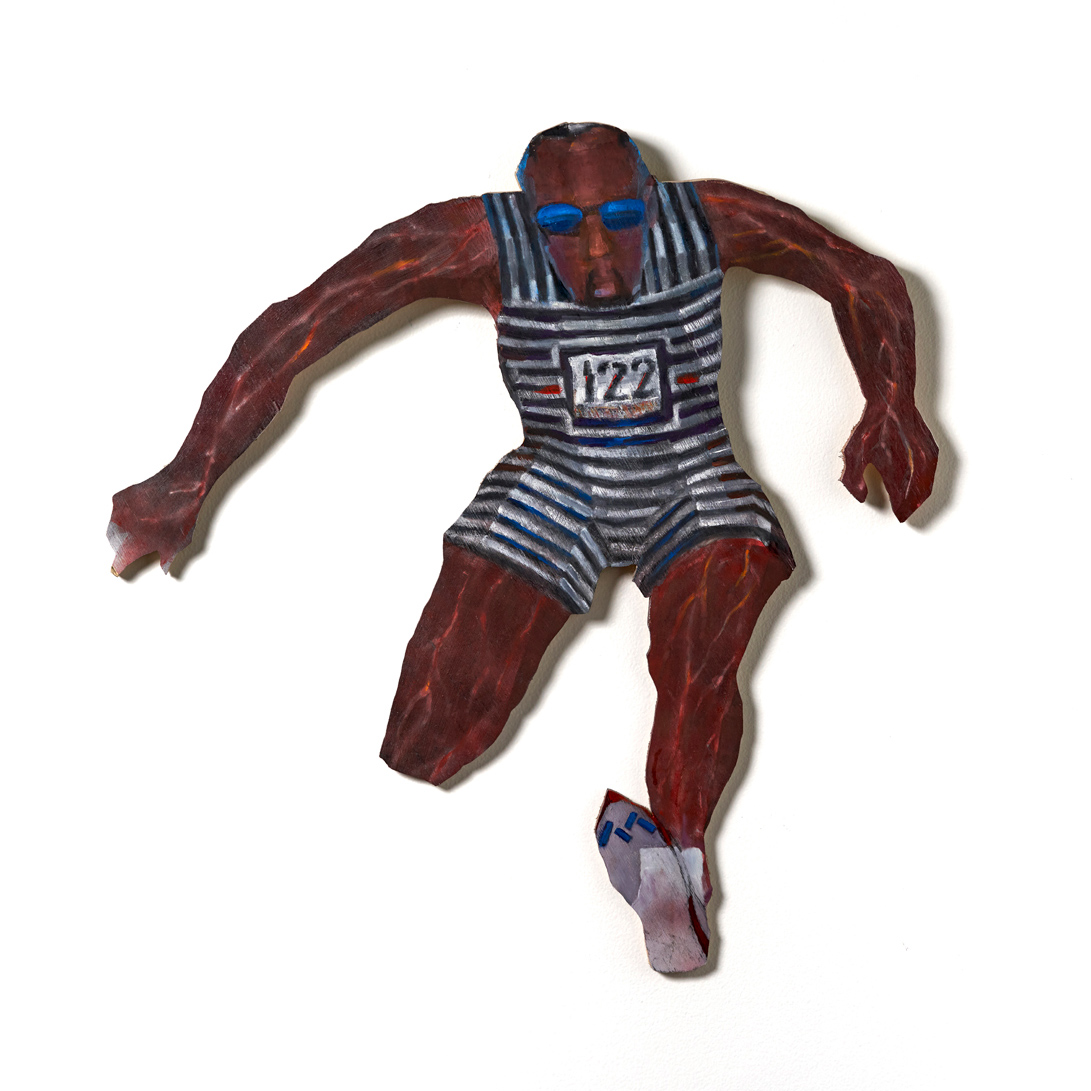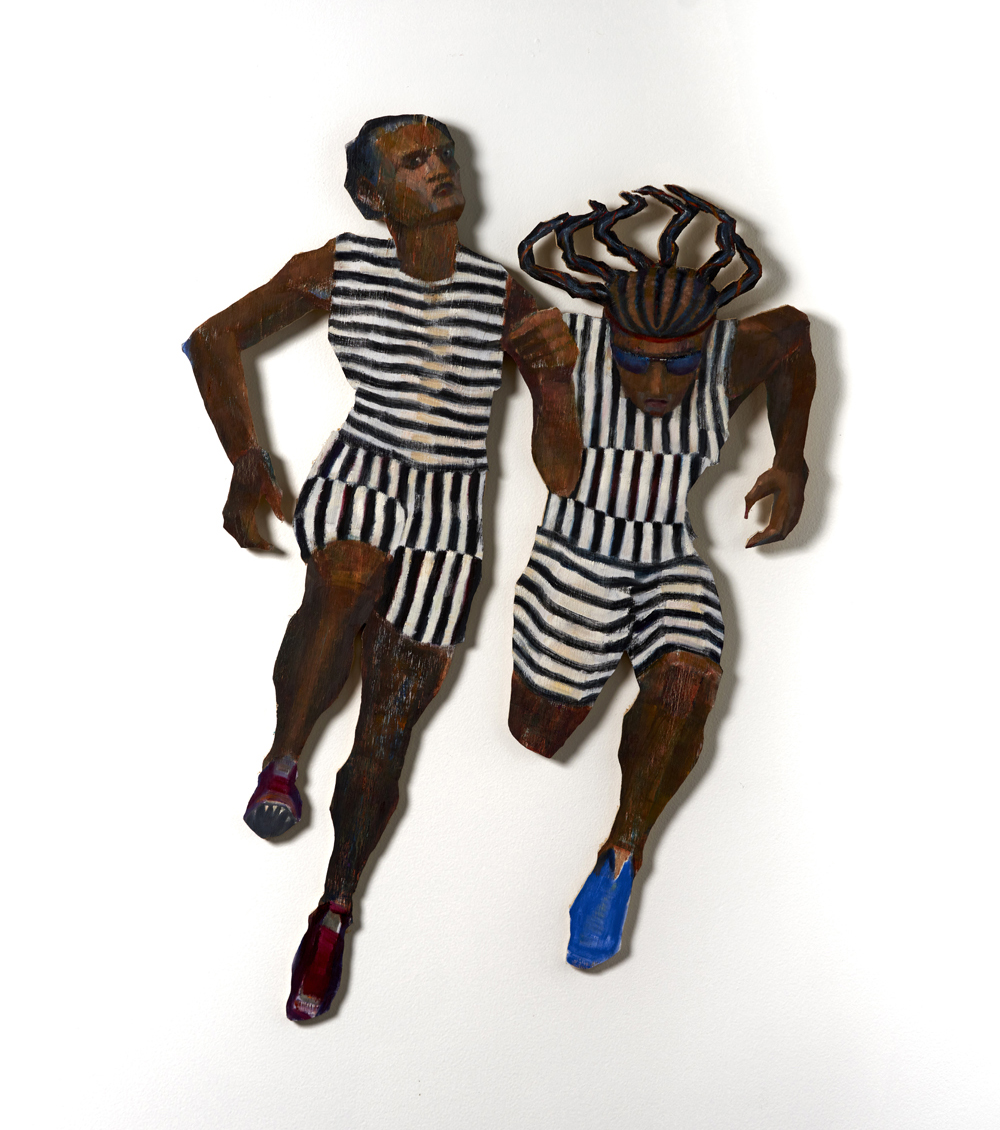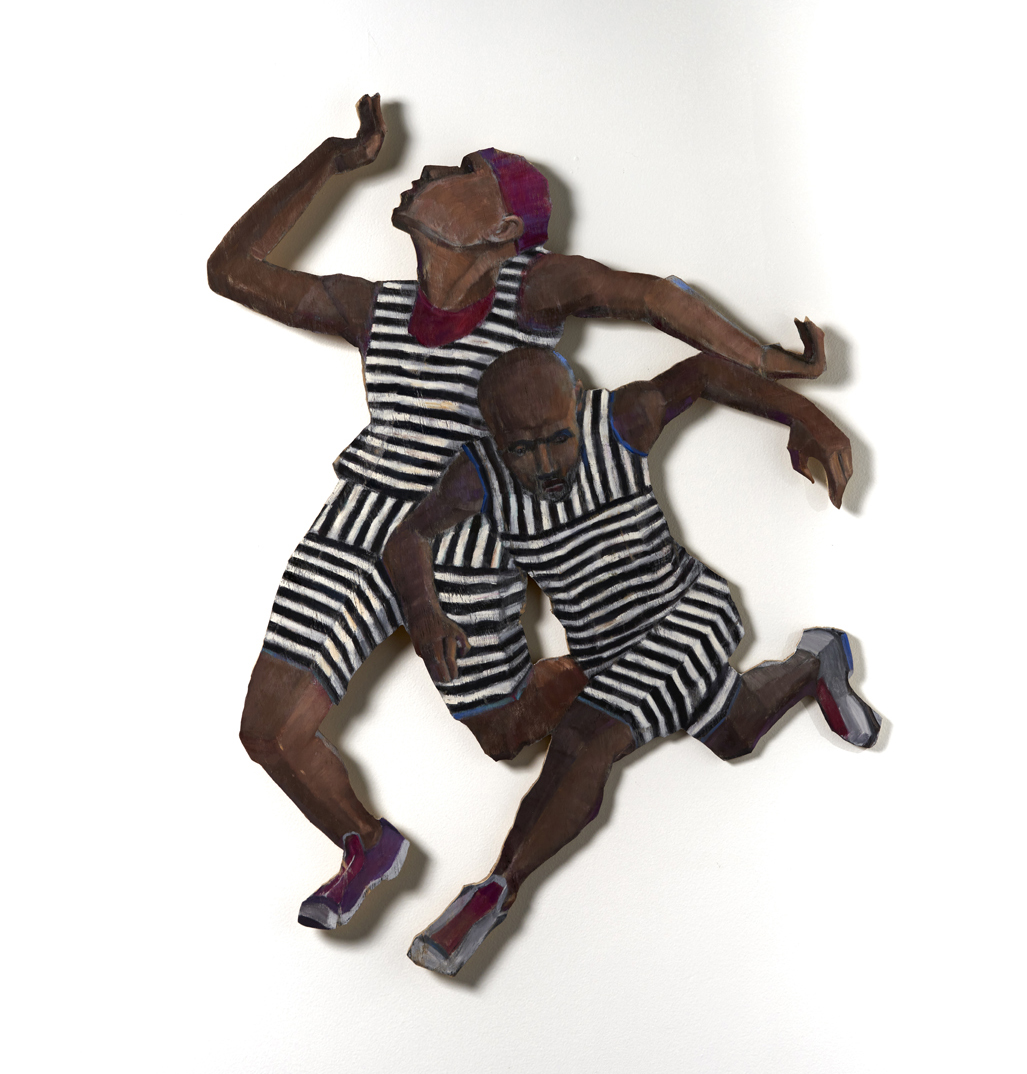
4/28/2020
Artist Spotlight
Bruce Robinson:
Forerunners
Contemporary Art Matters is proud to present an exhibition of Bruce Robinson, a Columbus, OH based artist whose brilliant and beautiful works combine concerns with contemporary culture, sports, music, art and African American history. Robinson’s solo exhibition Forerunners will be on view April 16th through May 29th, with a reception Thursday, May 28th from 5-8pm.
While the artist has a broad practice that includes ready-mades and ocular works, this exhibition focuses on his paintings on shaped plywood panels. The three pieces we look at here focus on the African American experience as viewed through the lens of athletic competition.

Bruce Robinson, Frontrunner, 2019, Oil on shaped canvas, 30 x 29 inches
Frontrunner (2019) is inspired by the track and field hurdles star Edwin Moses who won 122 consecutive races from 1977 to 1987 and set world records in his event four separate times. Rundown 1 & 2 are invented depictions of sprinters approaching the finish line, their bodies appear to be nearing peak exertion. In Rundown #2 (2016) the figures are executed in a substantial way, one figure looks as though he has cut off the other forcefully, and the second figure reels back in defeat and exhaustion.

Bruce Robinson, Rundown #1, 2019, Oil on shaped plywood, 40 x 30 inches

Bruce Robinson, Rundown #2, 2019, Oil on shaped plywood, 44 x 39 inches
In all three of these works Robinson has made the interesting decision to dress his subjects in garb that at first seems very dated, like a throwback to athletic gear of the past. Robinson has avoided the generally bright or solid colors that most track and field athletes wear today; the black and white stripes his athletes don are more reminiscent of prisoner’s uniforms than athletic wear. Herein, Robinson points to the complex challenges from the history of the African American experience and to the racial inequities that exist today in America, not only in sports, also predominant in mass incarceration. Sports have been seen as a vehicle for social mobility and more recently as a place to make a stand.



